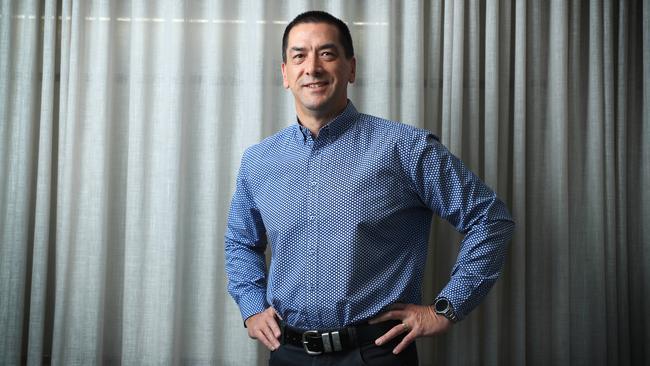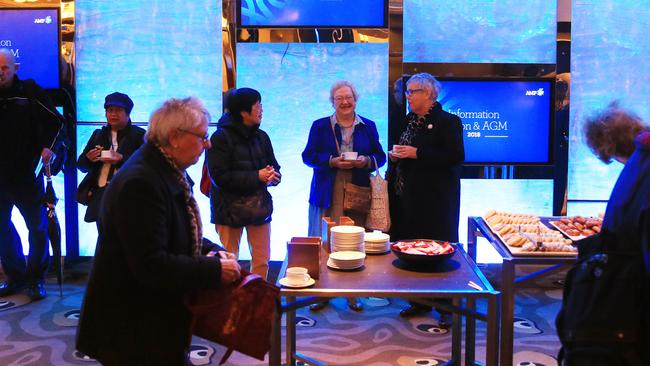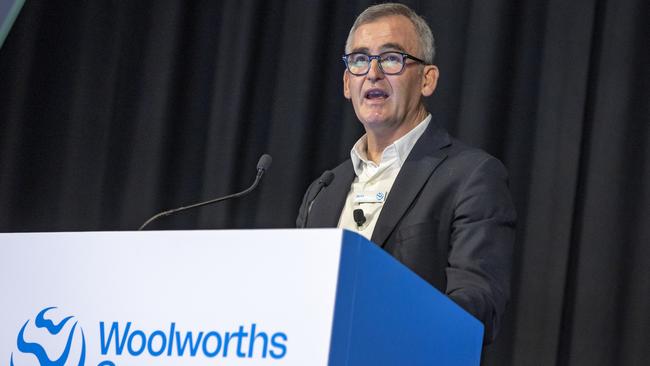Shareholders strike back as boards are put on notice
The message from annual meetings is clear: with returns going nowhere shareholder patience is wearing thin.

Business
Don't miss out on the headlines from Business. Followed categories will be added to My News.
That Whitehaven Coal’s chairman, Mark Vaile, spent much of his time on the back foot during his speech to shareholders defending a brand new and generous bonus scheme for the miner’s chief executive shows there is already a problem.
Vaile’s comments were largely ignored and shareholders delivered a stinging whack to the board by voting down the remuneration report. However, in a separate vote, they begrudgingly supported the awarding of nearly $4m in partially deferred bonuses, showing the anger was directed at the board not CEO Paul Flynn.

UK hedge fund Bell Rock has been stirring up anger about the bonus scheme as part of its broader push for Whitehaven to return its cash pile to investors. But they haven’t been operating in a vacuum. The 40.6 per cent vote against the remuneration report came from big investors that are not swayed by public theatrics but have their own firm views around remuneration.
The Whitehaven plan unnecessarily collapses the short-term and long-term parcel of Flynn’s remuneration and places a bigger emphasis on annual returns. The new scheme gives too much discretion to the board in determining bonus payments against non-financial metrics and the long-term hurdles are uninspiring. The scheme, introduced last year, effectively doubled Flynn’s remuneration package to $10m as Whitehaven rode the post-Covid boom in thermal coal prices.
Feeling the heat
It was a day where shareholders hit back with Woolworths also suffering its first strike and gas pipeline operator APA Group getting voted down. In recent weeks AMP, Dexus, Tabcorp and Treasury Wines have also copped shareholder strikes. The remuneration votes of others including Woodside, ASX Limited and CSL have only just got across the line.
A week from now Qantas chairman Richard Goyder will face the heat after the airline stumbled from one own goal to the next.
The message from shareholders from annual meeting season is that with the easy money all dried up, shareholder patience is wearing razor thin.
In Woolworths’ case, the strike was a way of telling the company there was an unacceptable performance on safety after there had been two worker deaths at its NSW operations in separate incidents. This has rightly been the focus among shareholders and at the annual results in August CEO Brad Banducci revealed the board had immediately docked all executive bonuses by 10 per cent.

Investors want to know if the deaths were a result of poor controls on part of the company. Both of the deaths related to equipment failure and one incident also involved a degree of human error.
Woolworths chairman Scott Perkins and Banducci addressed the deaths up front in their speech to investors, acknowledging the unacceptable performance and said investigations were in progress. The first incident was a contract cleaner working in a store who became pinned down by a cleaning machine in November. The second was a warehouse worker who was fatally injured while working with machinery.
There was a wide enough view among some big investors – understood to include several industry funds – that the bonus haircuts should have been deeper or payments put on hold until the investigations into the deaths had been finished. The Woolworths protest vote came in at 28 per cent, enough to beat the minimum 25 per cent needed. Until now, Woolworths has never lost a remuneration vote – even in the darkest days of the massive Masters losses.
The APA protest was squarely aimed at pay where the potential upside for short-term bonuses for new chief Adam Watson were increased from 60 per cent of fixed salary to 75 per cent, with investors arguing there was little justification for the change.

Whitehaven’s no vote followed the real-world application of the coal miner’s shake-up to executive pay that saw CEO Paul Flynn’s total package double to more than $10m over the past year. To ram the point home, chief financial officer Kevin Ball and operations boss Ian Humphris also enjoyed a doubling of pay. For context, BHP chief Mike Henry last year was paid the equivalent of $11.9m in what was a bumper year for iron ore prices.
Whitehaven’s Vaile expressed disappointed on the outcome, but will take the investor feedback seriously. Next year will be a test with Whitehaven on the cusp of a spill vote.
Even so it’s probably not a surprise that Whitehaven’s Vaile needed so long to explain the minute of the new pay scheme for his management team, because frankly it is incomprehensible.
Senior executives are entitled to be rewarded when shareholders are winning and motivated to deliver outstanding and sustainable returns over the long term.
This means they deserve to have more at risk and feel the pain when the company falls short – even on non-financial measures such as in Qantas’s case. Companies have spent decades overcomplicating how they pay their top executives and along the way many have lost sight of the fact remuneration structures need to be clear, simple and transparent.
Lithium queen
In answering the question about what multi-billionaire Gina Rinehart is up to, brokers who walk up and down Perth’s St George’s Tce have offered a clue.
Remember foremost, she is “an Australian patriot”, they say. And this extends right through the way she approaches business decisions, be it mining, cattle or even the backing of the Olympic and Paralympics swimming teams.

Rinehart is looking to frustrate the second takeover of an Australian lithium miner this month. This time she has snapped up more than 5 per cent of shares in Azure Minerals, the lithium miner that has agreed to sell itself to Chilean major SQM for $1.6bn. Rinehart’s move, revealed by my colleagues Bridget Carter and Nick Evans, follows the multi-billionaire forcing US lithium play Albemarle to abandon its $6.6bn merger with lithium play Liontown.
If Rinehart continues to builds her stake, it is likely the scheme of arrangement falls away, although SQM’s has a get-out clause for a possible spoiler by reverting its bid to an on-market takeover offer.
Rinehart’s commitment to lithium is said to be real and based around the forward assumptions that the metal underpinning battery technology will experience an exponential lift in demand. The use of the nearly $2bn in iron ore cashflows to make combined bets on real lithium assets is starting to run on par with rival billionaire Andrew Forrest, who instead is chasing commercially unproven green hydrogen.
While Rinehart has made it clear that she wanted to build a portfolio around lithium, the question is whether this will stay a passive position. As she moves into more and more investments, it is unlikely Rinehart will stay silent on how the mines are built and operated.
Rinehart’s wealth is currently estimated at almost $37bn. As well as gas and her flagship Roy Hill iron ore operation, the long money in Perth reckons if the lithium bet takes off, in a decade’s time this will easily be in the triple digits.
johnstone@theaustralian.com.au
More Coverage
Originally published as Shareholders strike back as boards are put on notice





